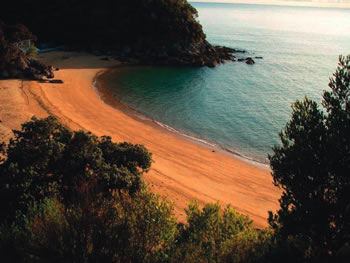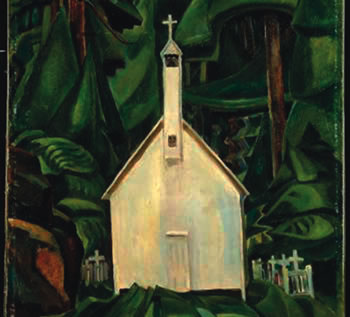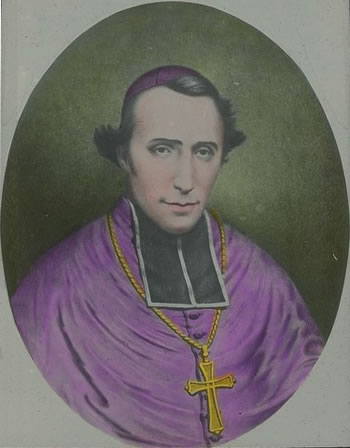Inspiration From Our Pioneer Pacific Missionaries
A project I’m working on at the moment involves reading through the letters that the early Marist missionaries in the Pacific sent back to France between 1838 and 1854. These have been collected into 10 Volumes and published in French under the title “Lettres Reçues d’ Océanie”. There are 1373 of these letters, and they amount to 6,357 pages of print. Some of the letters run into 50 pages and more. As I read through them I’m struck by three themes that run through so many of the letters.
The first striking element is the incredible difficulties the Marist missionaries experienced at the beginning of the missions. We couldn’t imagine what the prospect of shipwreck must have meant to these missionaries, many of whom couldn’t swim, and some of whom had never even seen the ocean till they stepped on board the boat taking them to Oceania. We couldn’t imagine the terror that must have taken over our confreres in the Solomons as they barricaded themselves in their hut, while a hostile tribe sat outside waiting for them. These confreres had witnessed the murder of Bishop Epalle, and had just heard of the deaths of three confreres, murdered and eaten.
the incredible difficulties the Marist missionaries experienced at the
beginning of the missions
Even on a less dramatic level, this is what Br Marie-Nizier wrote from Futuna:
“If I continue to go about as I have been almost all the time I’ve been on Futuna, the shoemakers wouldn’t be competing for my custom, because I always go barefoot. If you want to ask me why, I would tell you that it’s because I don’t have any shoes. It was certainly a penance in the beginning to walk across reefs nearly as sharp as needles, and over rocks as rugged as one can imagine, but now I hardly notice.”
(Marie-Nizier to Colin 10/12/44 LRO Vol III, 353:4)
Almost all the missionaries who describe the difficulties of their lives, add what Marie-Nizier wrote: “I hardly notice”, or “That’s the way a missionary lives.”
A second striking feature of the letters is the missionaries’ deep respect for and devotion for Father Colin, the Founder of the Society of Mary. Father Colin had asked them all to write to him at least twice a year, insisting that they tell him everything. And they did, opening themselves up to him as to a spiritual father, even to the point of revealing to him what they would whisper to a priest in confession. Letter after letter reveals this profound confidence they had in Colin as their Founder, their Administrator, their spiritual guide.
The third feature that strikes me is the devotion the missionaries had to Our Lady, and their conviction that bearing her name would bring them graces and get them out of all sorts of scrapes. They don’t hesitate to attribute to her the great escapes they had from death by drowning or by murder, or the lesser miraculous interventions that happened frequently. Jean-Baptise Petitjean sent a letter from Wangaroa in New Zealand to his brother-in-law in France. He describes one of his miraculous escapes:
“It was the feast of St Scholastica, 1841, and it was about 10 o’clock at night. I was climbing steep rocks in search of a track. Below me was a raging sea and with a single false step I would have fallen. I climbed with courage; I fought against the ferns and the scrub, I continued against all hope, I was consumed with thirst. In my anguish I started to sing the hymn: “I trust in thy help, O Mary.” Hardly had I finished these words when I saw the track open beneath my feet. These are certainly not miracles worthy of wide publication, but I can testify that in this case and others where I have found myself in great worry and difficulty, I was delivered from my troubles after praying to Mary and I felt in the depth of my heart an intense sense of joy and gratitude towards the great protectress of our mission. “
(Petitjean to his brother-in-law, LRO Vol I,87:3)
The first groups of missionaries who came to the Pacific hadn’t done much formal training in religious life or in Marist life. I’m not surprised that among their writings there’s no reference to the sort of “big Marist ideas” that were part of our spiritual formation. I don’t read much about the themes of Mary in the Church, or Marists as Instruments of Mercy, or Mary hidden and unknown. But very frequently I find them writing about their happiness at bearing her name and acting in her name, often referring to her in Marcellin Champagnat’s favourite title as “our good Mother.”
Those early Marists wouldn’t have found any difficulty in seeing their Marist vocation as a sort of mirror-image of the great Christian vocation that St Paul describes in his letter to the Ephesians. In that letter he writes about the privilege that Christians have in being called from the beginning of time to bear the name of Christ. The name of Christ is a protection, and bearing the name of Christ brings a responsibility to do the work of Christ in “reconciling all people to God.” The Marist vocation fits into this Christian vocation and reflects it. Those missionaries knew they were chosen by God from the beginning to bear the name of Mary. That name was a protection for them, and it carried with it the responsibility to do the work of Mary in being instruments of mercy, reconciling people to the Father in the name of Jesus in whatever part of the world they found themselves.
If the tone and future of any enterprise is coloured by how it begins, I’m not surprised to see in the lives of Marists I have lived with something of those same three qualities I find revealed in the letters of those pioneer Marists. Sometimes one or other of those qualities is more evident in the lives of different Marists I’ve known. And I’m aware that in the course of my own life sometimes one and sometimes another of those “flames” has burned more strongly. But I don’t think any Marist can survive without these elements.
Hidden among the letters is one written by Brother Pierre-Marie Perenon to Father Colin. Pierre-Marie was one of the early missionaries who came to New Zealand. I had hardly heard of him. He was in the fifth group of missionaries to set out from France, and he arrived in New Zealand in June 1841. I think he sums up those three characteristics of the early Marist missionaries. In one of his first letters to Father Colin he laid bare his conscience, saying:
“I’m taking advantage of the opportunity given by Father Epalle’s leaving for France to carry out a duty that I’ve wanted to fulfil for a long time; it’s the duty of thanking you for being kind enough to send me in the footsteps of new apostles. From the moment when my prayer was granted, I didn’t doubt that it was to Our Lady of Fourvière and to you, Father, that I was indebted for it. … I’m very content with my vocation, but I’m not happy with myself. And yet I’m astonished at what the good Lord wants to use me for in the mission. Despite my weakness and my imperfections, I still dare to ask God for the grace of martyrdom with as much confidence as I asked for the grace of coming to the missions.”
Br Pierre-Marie to Colin 20/05/1842
LRO Vol II, 164:1,2
Pierre-Marie didn’t get his wish for martyrdom. His health broke down and after some years he returned to France where he died in 1868.
That he is hardly remembered by anyone is of no consequence. That he lived and died faithfully under the name and protection of Mary is everything.


 Entries(RSS)
Entries(RSS)